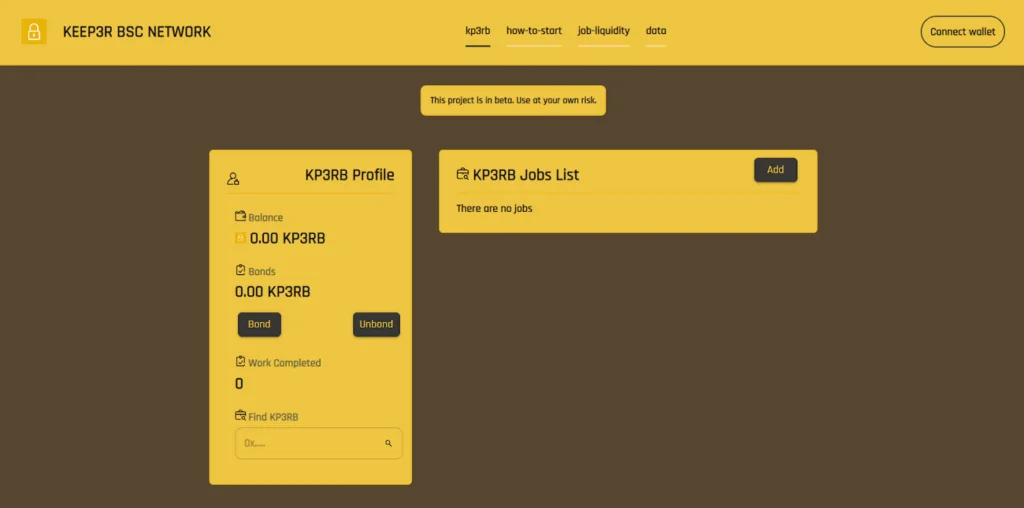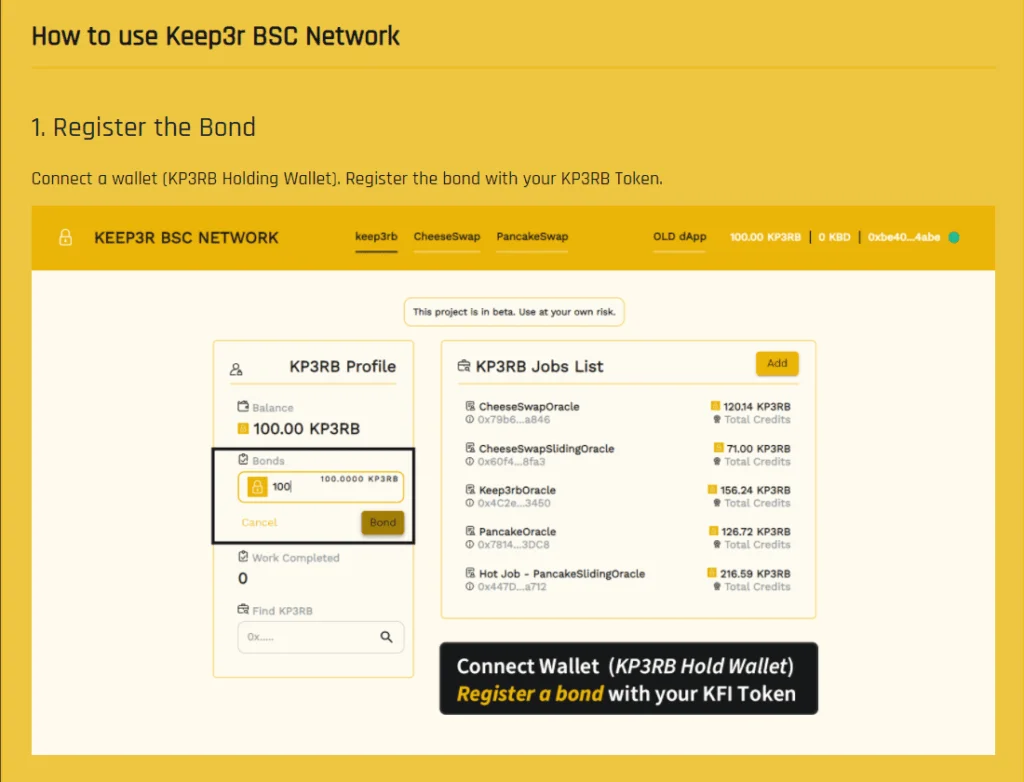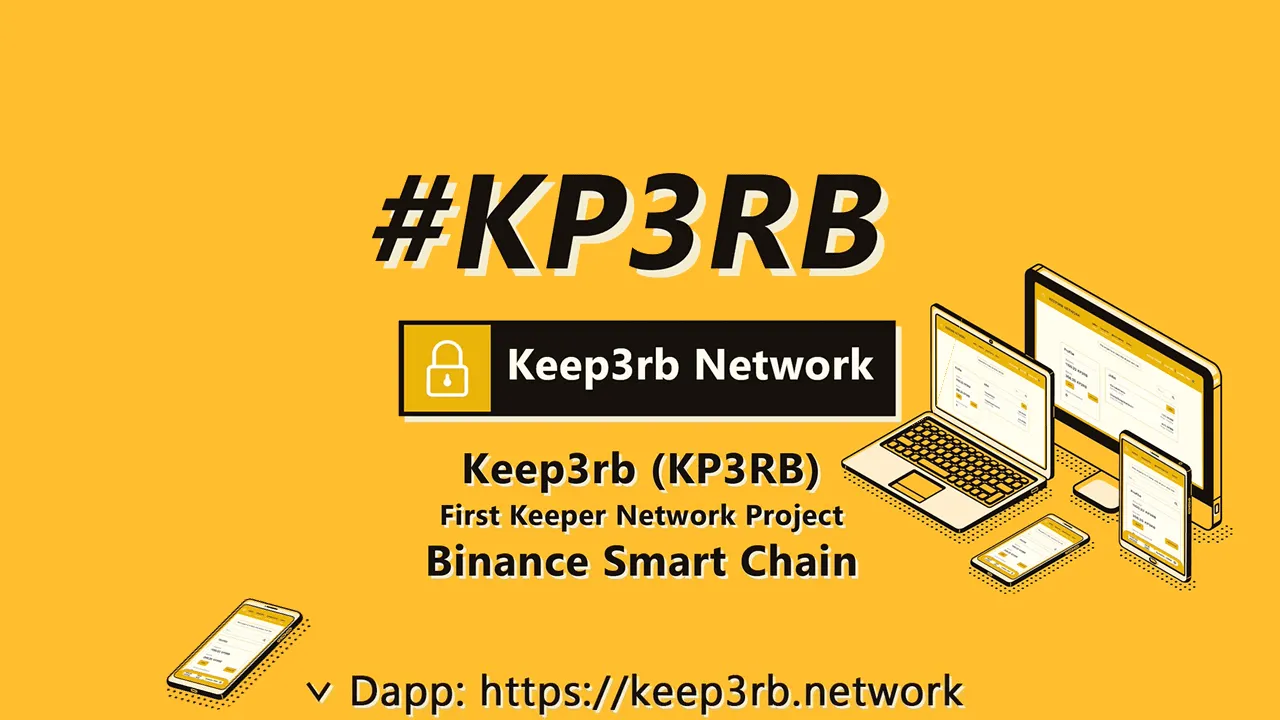
Keep3rb Network is a decentralized keeper network built on Binance Smart Chain for projects that require external DevOps and external teams to find keeper jobs.
DevOps is a set of practices that combines software development (Dev) and IT operations (Ops). It aims to shorten the systems development life cycle (SDLC) and provide continuous delivery with high software quality.
Keep3rb network provides a seamless platform to connect DevOps teams (Keepers) with project teams that require DevOps tasks (Jobs).
This project is not to be confused with Andre Conje’s Keep3r Network ($KP3R).
What is a Keeper
A keeper is the term used to refer to an external person or team that executes a job. Keepers can also be bots, scripts, other contracts, or simply EOA accounts that trigger events.
The job can be as simple as submitting a signed TX on behalf of a third party, calling a transaction at a specific time, or more complex functionality that requires extensive off-chain logic. Each time a keeper executes a job, they are rewarded with $BNB, tokens, or the system’s native token $KP3RB.
Jobs might require keepers that have a minimum amount of bonded tokens, have earned a minimum amount of fees, or have been in the system longer than a certain period of time.
At the most simple level, they simply require a keeper to be registered in the system.
With the keeper network being decentralized, It is up to the keepers to set up their DevOps and infrastructure and create their own rules based on what transactions they deem profitable.
What is a Job
A job is the term used to refer to a smart contract that requires external DevOps or a team to perform an action. The action needs to be performed in goodwill and not as a malicious act to harm the project. For this reason they register as a job, and keepers can then execute on their contract.
Becoming a Keeper

To join as a keeper, you need to connect a wallet and register a bond. You do not need to have $KPR3B tokens to participate as a keeper, you can join as long as you have a wallet to hold your tokens.
There is a 3-day activation period before you can activate as a keeper. Once the three days have passed, you will be able to activate your bond.
Once activated, you are officially a keeper on the network and will be able to select jobs from the Keep3rb network jobs list.
Registering a Job
Keep in mind that the Keep3rb network does not get in the way of the job. They do not define nor restrict the action taken, hence its decentralized nature. Incentive mechanisms are available for all parties involved to ensure tasks are carried out efficiently. There are 2 core ways to create a job:
- Registering a job via Governance – you can register a job simply by creating a new proposal via governance. If governance approves, no further steps are required.
- Registering a job via Adding Liquidity – you will need to provide liquidity to one of the approved liquidity pairs (for example KP3RB-BNB). You put your LP tokens in escrow and receive credit. When the credit is used up, you can simply withdraw the LP tokens. You will receive 100% of the LP tokens back that you deposited.
Job Credits
Each job has a set amount of credit they can award keepers. You do not need to purchase KP3RB tokens to receive credits. Instead you are required to provide liquidity in Keep3rb network’s job liquidity pools.

You can remove your liquidity at any time, so you do not have to keep buying new credits. Your liquidity provided is never reduced and as such you can remove it whenever you no longer would like a job to be executed.
There are 3 primary payment mechanisms to pay keepers and these are based on the credit provided:
- Pay via liquidity provided tokens (based on ‘ addLiquidityToJob ‘)
- Pay in direct BNB (based on ‘ addCreditETH ‘)
- Pay in direct token (based on ‘ addCredit ‘)
Governance
Keep3rb governance by design has a low overhead, it is not meant to be protocol intensive. The focus is simply on reviewing and approving jobs, and if absolutely required mitigate disputes or blacklist keepers.
Only bonded keepers may participate in governance. To participate in governance a keeper must first bond $KP3RB, once bonded they can delegate voting rights to either themselves or another party.
The core function of governance is to approve and include jobs, when liquidity is provided for a job, a proposal is automatically created to include them for review. Bonded keepers will review the contracts and decide if they should be included. It is important that jobs code defensively, assume keepers will only include your job to maximize their returns, as such maximum payment thresholds have been implemented.
As a last resort, governance has certain rights over managing keepers, these include lodging disputes, slashing, revoking access, and resolving disputes.
Job Interface
Some contracts require external event execution, an example for this is the ‘ harvest() ‘ function in the yearn ecosystem or the ‘ update(address, address) ‘ function in the uniquote ecosystem. These usually require a restricted access control list. However, these can be difficult for fully decentralized projects to manage, as they lack DevOps infrastructure.
These job interfaces can be broken down into 2 types, no risk delta and harvest. No risk delta is similar to an ‘ update(address, address) ‘ in uniquote, which has no risk to execution. ‘ harvest() ‘, as seen in yearn, can be exploited by malicious actors using front-running deposits.
For complete information on how these codes are executed, you can refer to the official Medium post by Keep3rb network.
$KP3RB Token
According to Coinmarketcap, the platform’s native token $KP3RB stands at a token supply of 211,450. No further details about token supply and distribution are provided at present.
Conclusion
Keep3rb network aims to facilitate DevOps projects in a decentralized environment. The scope of the Keep3rb network is not to manage these jobs themselves but to allow contracts to register as jobs for keepers, and to allow keepers to register themselves to perform jobs. Due to its decentralized nature, both the keeper and job can define and set their own parameters and rules as they choose.
It will be interesting to see how BSC’s first keeper network performs and how it will change the DevOps market and its practices.

To learn more about Keep3rb network and the project’s future developments, check out their official channels listed below:
Website – https://keep3rb.network/
Twitter – https://twitter.com/keep3rb
Telegram – https://t.me/keep3rb
News – https://t.me/kp3rbnews
Medium – https://keep3rb.medium.com/
GitHub – https://github.com/keep3rb-network
Sources:

